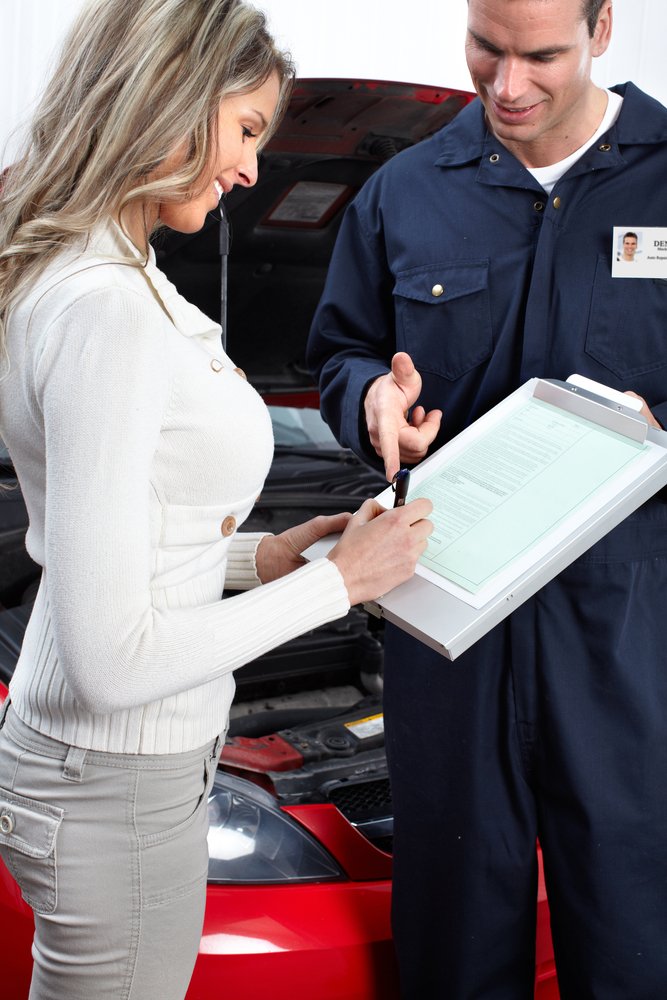The vehicle you drive came off of the production line and was delivered to the dealership (such as Norm Reeves Lincoln) with a specific wheel alignment that was designed to maintain the maximum driving experience for you. The manufacturer of your vehicle designed the vehicle with the expectation that this alignment is kept. As we all know, wheel alignments can be altered very easily and quickly.
But what is a tire alignment? Tire alignments are not as well-known or understood as tire rotations. For this reason, people might confuse the two. In fact, a tire alignment doesn't do anything to the tires or the wheels themselves. An alignment procedure will adjust the suspension and the angles at which the tires face and turn.
It is also not the same procedure as a tire balancing. Balancing refers to the fixing or compensation of any weight imbalances in your combination of tires and wheels. This requires your technician to mount your tires properly to the wheel and adjust their inflation based on the weight and other physical elements of your vehicle.
The idea of a wheel alignment is to make each tire line up evenly with the road on three different degrees of measurement, camber, toe, and caster.
Camber
The degree to which the top/bottom of the tire leans inward or outward from the perspective of the front or back of the vehicle. This can be caused by worn bearings, joints, and other elements of your suspension. It can also cause your vehicle to shake at different speeds depending on your misalignment.
Toe
The degree to which the tire faces inward or outward from the perspective of the top of your vehicle. Think, your toes pointing in or out when you're looking down at them. As is easy to imagine, driving this way can cause very uneven wear on certain areas of your tires.
Caster
The angle or tilt of your wheel where it meets and is connected to your suspension as viewed from the side of your vehicle. Positive caster means your tire is aligned further inward toward the center of your vehicle. Negative is the opposite. A proper centerline caster will correct your steering, cornering, and overall stability.
You may be tempted to look at your wheels to try and gauge whether you are in need of an adjustment. While your beloved vehicle certainly notices and appreciates your concern, you are better off looking out for a few different symptoms which usually point to misalignment. These include uneven tread wear, the vibration of your steering wheel, the pulling of left to right by your vehicle, and an off-center steering wheel while driving straight.
Your wheel alignment can be compromised by poorly maintained roads, pot holes, by hitting a curb or getting into the smallest of accidents. Any of these signs should lead you to your service center or technician. Additionally, you will need to have properly aligned tires to pass your state inspection.
Signs It's Time for a Wheel Alignment:
• Pulling to the left and right
• Uneven tire wear
• Rapid tire wear
• Squealing tires (usually when turning around a corner)
• Vibrations in the steering wheel
• Steering wheel is crooked when driving straight
By keeping up with routine check-ups and alignments, you will find that your driving experience will be much better, as will your wallet, by not having to worry about added repairs and replacements that can be avoided.
What Will Routine Wheel Alignments Do for Your Vehicle?
• Tire longevity: Proper alignment will minimize tire wear and tear
• Smoother riding
• Keeps tires pointed in the right direction
• Minimizes braking distance
• Maximizes fuel efficiency
Because there is no 'Need Wheel Alignment Now' light that illuminates on your dashboard when your alignment has been thrown off, it's recommended you visit your mechanic or service center for a professional check-up. An unwritten rule that many follow is having your wheels aligned every other oil change. There's also the idea of getting to your mechanic if you feel something off in your vehicle's operation.
How to Minimize the Need of Getting a Wheel Alignment:
• Junk in the trunk? The weight of material in your trunk lowers the level of your vehicle, which changes the angle of your wheels.
• Maintain correct air pressure in your tires: Most vehicles have a tire pressure gauge on the dashboard that will illuminate when tire pressure is needed. Frequent tire pressure check-ups could save you a lot of money in repair bills and extend the mileage/lifetime of your tires.
• Drive conservatively: By keeping a less than aggressive profile on the roadways, it will not only keep your wheels aligned correctly, but it will add to the lifetime of your vehicle altogether.
In closing, keep a lookout for the signs that may be telling you that your wheel alignment is off and keep up with the minor maintenance that is sure to make long lasting differences on the performance of your vehicle. A visit to your mechanic or service center may save you much more in the end than having to have your tires completely replaced prematurely.
Need Additional Information?
If you are still unsure if your car is in need of a tire service, the service pros at Norm Reeves Lincoln are more than willing to assist you with all your tire service needs. Visit our service center at Norm Reeves Lincoln 18900 Studebaker Rd Cerritos, CA 90703 or call us at 1- 866-476-8822
